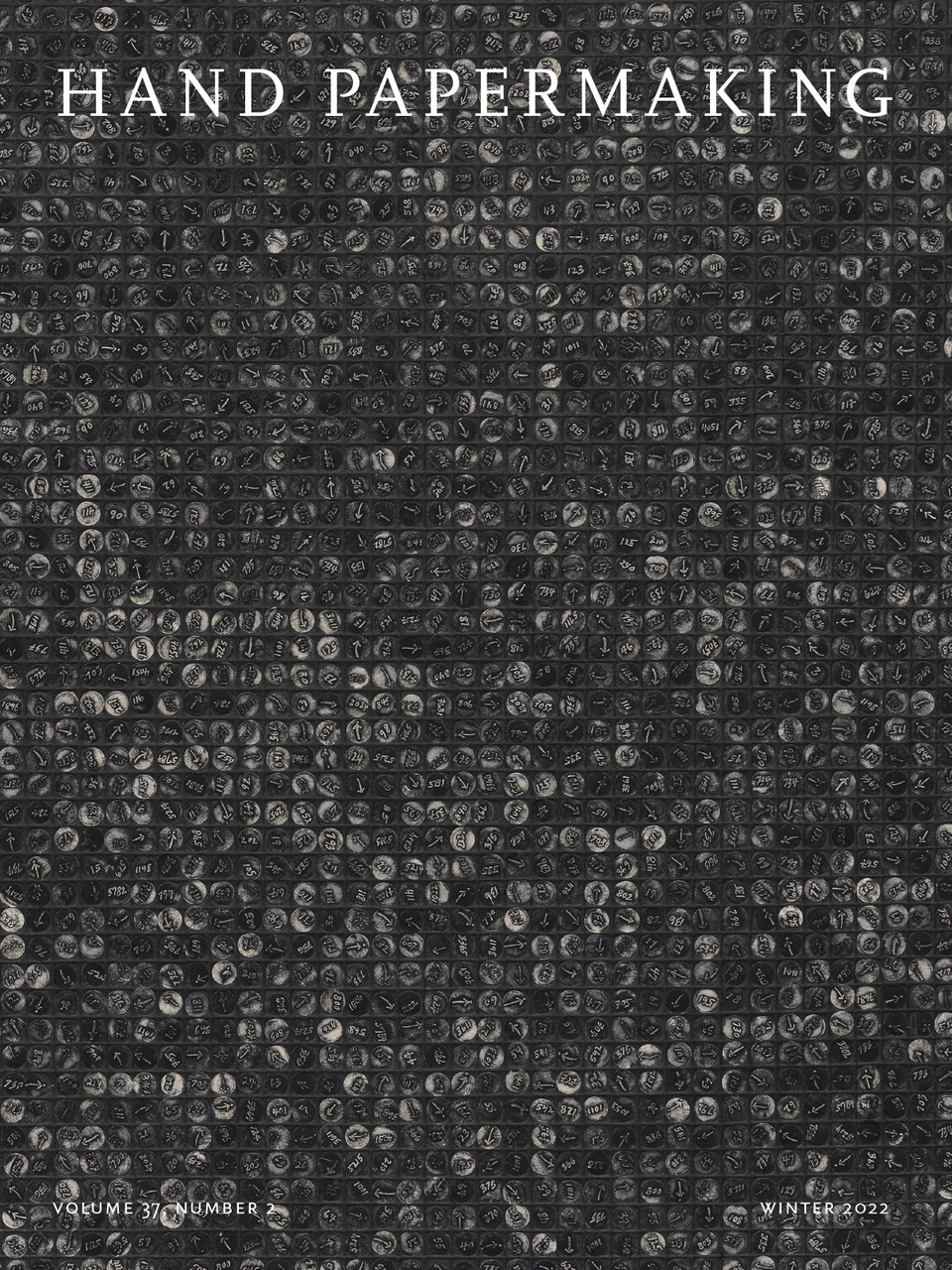The chiaroscuro watermark sample you see here was made specifically for Hand Papermaking magazine, formed on a 3-D printed chiaroscuro papermaking mould. The technique bypasses the traditional method of pressing the wove surface between brass dies. The process is entirely digital up to the point of 3-D printing the mould.
Fiber preparation is key to a successful chiaroscuro watermark. The goal is a short, free stock. I accomplish this in my Valley beater by adding 360 grams of second-cut cotton linters to 23 liters of water with 15 kilograms (33 pounds) on the lever arm. In place of the standard hook and weights I simply add a pail containing 15 liters of water (one liter of water conveniently weighs one kilogram). The weight is added from the beginning of the beat, which lasts 35 minutes. At the end I add 36 grams of titanium dioxide and 18 grams of calcium carbonate, 10% and 5% respectively of the dry weight of fiber. Fillers increase opacity, which increases the tonal range of the watermark. Finally, I lightly tint the paper by adding small amounts of dilute blue and black aqueous-dispersed pigments and beat for an additional 3 minutes to combine the fillers, pigment, and fiber.
Maintaining the optimum thickness of the sheet is important. Too thin, and it easily tears while couching with portions remaining on the mould. Too thick and the watermark becomes cloudy and loses definition. To maintain the proper GSM (grams per square meter), I form the sheets in a deckle box where a measured amount of furnish is added each time, creating a consistent thickness.
Following the advice of Don Farnsworth, I couch the sheets onto Evolon, an absorbent microfilament fabric conservators use to wick moisture, that I place on top of commercial papermaking felts. I cover the sheet with a second piece of Evolon, followed by another felt. After wet pressing, I transfer the Evolon-paper-Evolon sandwich directly into the dryer box. Following this method the delicate sheets are never lifted while damp when they can easily tear or stretch. After drying, I peel off the Evolon, which imparts a fine finish to the paper.






